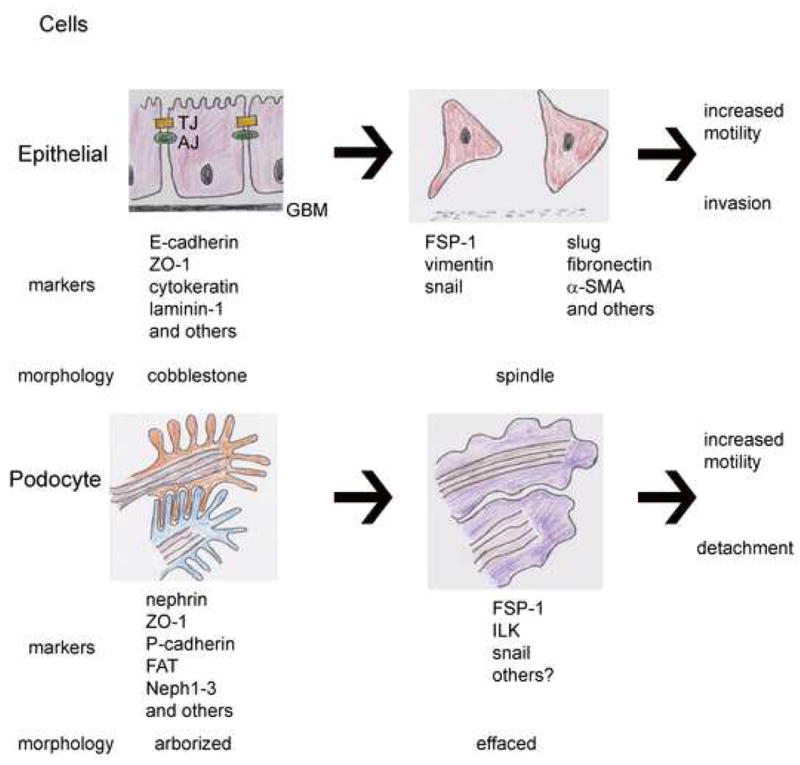Figure 1.

Top panel depicts an arrow demarking the epithelial-mesenchymal transition (EMT) in columnar epithelial cells that are characterized by the presence of tight junctions (TJ) and adherens junctions (AJ) at their apical aspect and adherence to the glomerular basement membrane (GBM) at the basal aspect. The columnar epithelial cells lose cell-cell junctions and their cobblestone morphology and develop a spindle shape, permitting increased motility and promoting migration into and through a degenerating GBM. Bottom panel depicts the phenotype change in podocytes (arrow): arborized podocytes have interdigitating foot processes linked by slit diaphragms (SD), but retain more mesenchymal characteristics at baseline, with spindle shaped processes and expression of vimentin. In diabetic nephrophathy, podocytes become effaced, and have increased expression of mesenchymal markers. They do not invade the GBM, but rather increased motility results in detachment and loss of podocytes.
